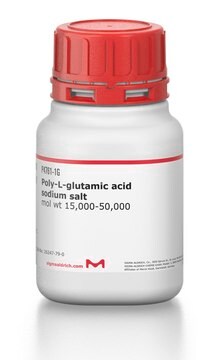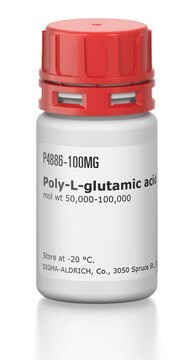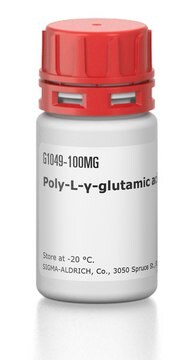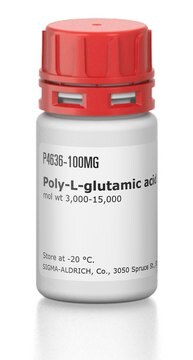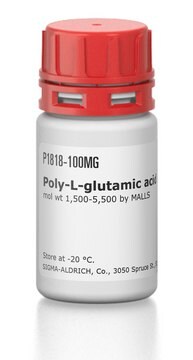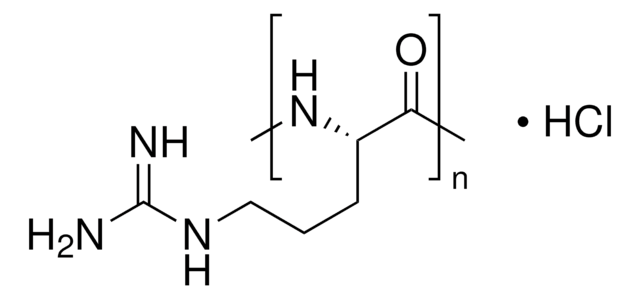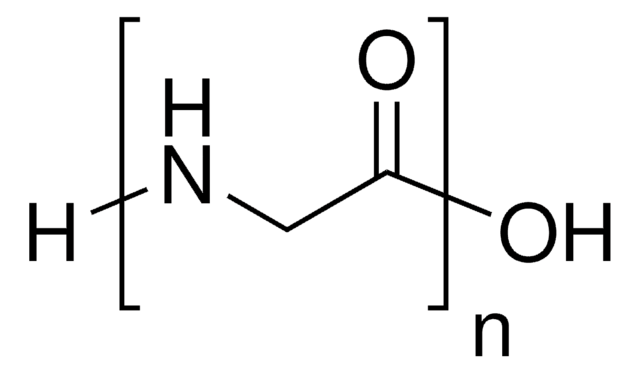P3418
Poly-(α,β)-DL-aspartic acid sodium salt
mol wt 2,000-11,000
Sinonimo/i:
Aspartic acid homopolymer sodium salt
About This Item
Prodotti consigliati
Stato
powder
Livello qualitativo
PM
2,000-11,000
Colore
white to off-white
Temperatura di conservazione
−20°C
Cerchi prodotti simili? Visita Guida al confronto tra prodotti
Categorie correlate
Applicazioni
- Improving the effectiveness of (-)-epigallocatechin gallate (EGCG) against rabbit atherosclerosis by EGCG-loaded nanoparticles prepared from chitosan and polyaspartic acid.: This research highlights the development of nanoparticles using polyaspartic acid to enhance the bioavailability and therapeutic effect of EGCG in treating atherosclerosis (Hong et al., 2014).
- Polyaspartate, a biodegradable chelant that improves the phytoremediation potential of poplar in a highly metal-contaminated agricultural soil.: The study evaluates the use of polyaspartate in enhancing the phytoremediation capabilities of poplar trees, showcasing its environmental application for soil decontamination (Lingua et al., 2014).
- Modulation of calcium oxalate dihydrate growth by selective crystal-face binding of phosphorylated osteopontin and polyaspartate peptide showing occlusion by sectoral (compositional) zoning.: This research investigates the role of polyaspartate in modulating the growth of calcium oxalate crystals, with implications for understanding kidney stone formation (Chien et al., 2009).
Nota sulla preparazione
Risultati analitici
Altre note
Codice della classe di stoccaggio
11 - Combustible Solids
Classe di pericolosità dell'acqua (WGK)
WGK 3
Punto d’infiammabilità (°F)
Not applicable
Punto d’infiammabilità (°C)
Not applicable
Scegli una delle versioni più recenti:
Possiedi già questo prodotto?
I documenti relativi ai prodotti acquistati recentemente sono disponibili nell’Archivio dei documenti.
Articoli
Humankind has utilized protein materials throughout its existence, starting with the use of materials such as wool and silk for warmth and protection from the elements and continuing with the use of recombinant DNA techniques to synthesize proteins with unique and useful properties.
Il team dei nostri ricercatori vanta grande esperienza in tutte le aree della ricerca quali Life Science, scienza dei materiali, sintesi chimica, cromatografia, discipline analitiche, ecc..
Contatta l'Assistenza Tecnica.